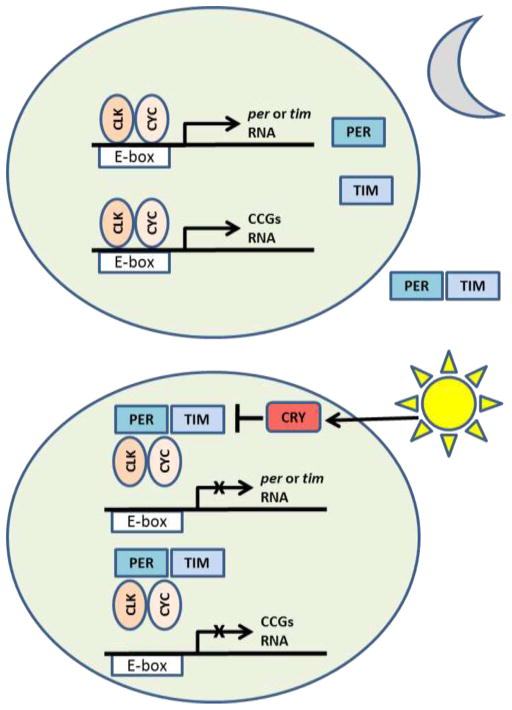Fig. 1.
Schematic depiction of the negative feedback loop that forms the core mechanism of the Drosophila clock. At night (upper panel) the CLK/CYC heterodimers bind to E-box sequences in per and tim promoters and activate transcription of these genes. Resulting PER and TIM proteins form heterodimers, enter the nucleus and bind to CLK/CYC repressing further transcription of per and tim. Morning light activates CRY protein (lower panel) which binds to TIM causing its degradation. PER, which is stabilized by TIM, also degrades ending repressive phase of the clock and allowing positive arm of the clock to restart. Note that degradation of TIM and PER proteasome is also accomplished in constant darkness. Many clock-controlled genes (CCGs) also contain E-box in their promoters and their transcription is directly stimulated by CLK/CYC. Some of these CCGs encode transcription factors, which indirecly generate rhythmic transcription of additional CCGs. Figure based on reference [1].

